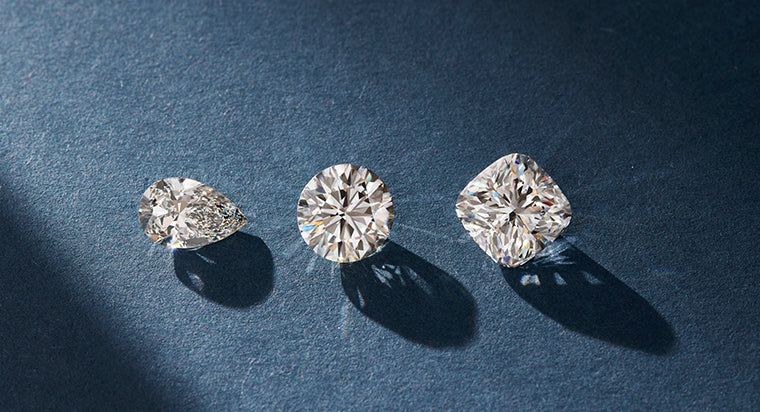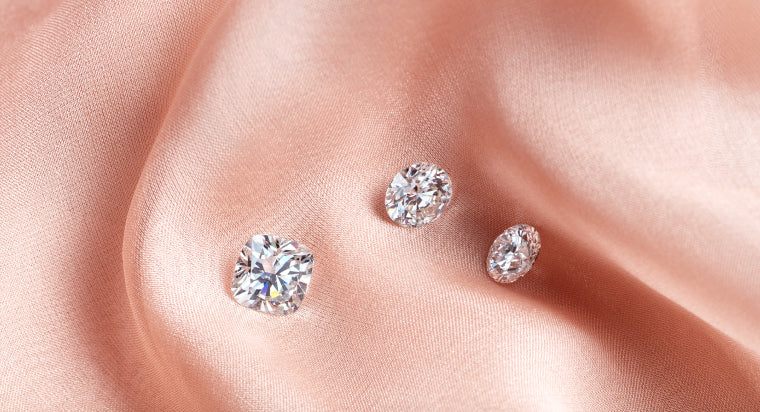All You Need to Know about the Value of Lab Diamond

The popularity of lab grown diamond has skyrocketed in recent years, and these ethically sourced, sustainable stones aren't going anywhere. In addition to looking the same as natural diamonds, they are more affordable, sustainable, and an ethical choice. Keep reading to learn all you need to know about lab grown diamonds so you can determine if they're right for you.
TABLE OF CONTENTS
Introduction to Lab Grown Diamonds
Lab diamonds refer to stones that are created in a controlled environment rather than mined from the earth. There are two ways to develop lab-made diamonds - High Pressure High Temperature (HPHT), and Chemical Deposition (CVD). Both of these processes use a “seed” diamond and recreate the intense temperatures and pressure needed to transform carbon into diamonds. While lab diamonds were invented nearly 75 years ago, lab diamond technology has drastically improved over the years.
Comparison with Natural Diamonds
Lab diamonds look the same and have the same composition. The only difference is that one is mined from the earth, and the other is created in a lab. You'll hear plenty of myths about lab diamonds, like they're “fake” diamonds, which is untrue. They're real diamonds and look the same to the naked eye. The only way to tell if a diamond is natural or lab-made is to have an expert gemologist look at it. Natural diamonds sometimes have traces of nitrogen. Another misconception is that lab diamonds are inferior to natural diamonds. This is also false - in fact, lab diamonds have extra benefits that natural diamonds do not.
Price Trends and Market Demand
As the technology to create lab diamonds gets better and more efficient, the more you'll save on lab diamonds. The increasing demand for lab diamonds has inspired more manufacturers to enter the lab diamond market, and this has made lab diamonds more affordable. For example, let's compare a natural and lab 1-carat princess-cut diamond. A natural stone would cost roughly $2,500, and a lab diamond with the same quality would cost about $500. You can get a larger, higher-quality diamond for your money by selecting a lab diamond.
In 2015, about 1% of diamonds sold were lab diamonds. Today that amount is closer to 20%, according to industry data from Paul Zimnisky Diamond Analytics. This amount will continue to increase in years to come. Some consumers prefer owning a diamond that is more sustainable and environmentally friendly.
Quality and Certification
Like natural diamonds, you can purchase certified lab diamonds that are evaluated by a third party, typically GIA or IGI. The diamond comes with a detailed report that explains the quality of your diamond (cut, clarity, color, and carat weight). Cut is the shape of the diamond as well as how the facets are cut. The cut determines how much brilliance and fire your diamond has. Clarity is the inclusions within the stone, and color is the hue of the diamond (colorless to slightly colored). Carat weight is the overall weight and size of the stone. Certified diamonds confirm that you own the diamond you carefully selected. It's also interesting to see the quality information for your stone.
Consumer Perception and Acceptance
More consumers are intrigued by the idea of lab diamonds. More lab diamonds are sold every year, and this amount continues to increase year by year. Consumers are more accepting of lab diamonds than in years past because attitudes are shifting. More couples prefer doing things their way and don't feel as much pressure to follow tradition as in years past. Couples are conscientious about the environment and would prefer purchasing a diamond from a lab.
Resale Value and Investment Potential
There are several factors that go into the investment potential of lab diamonds, and they fluctuate too much to predict how they'll go. Especially as the demand increases and more lab diamond companies are entering the market. It's hard to predict the future investment potential of lab diamonds and how their resale value will look. Whether you have a lab or natural diamond, you have a sentimental piece of jewelry that's important to you.
Sustainability and Ethical Considerations
Mined diamonds are dug from deep within the earth. This disrupts the soil as well as the ecosystems of that area. While lab diamonds use some natural resources, they have a reduced carbon footprint and a smaller environmental impact. When you purchase a lab diamond, you know exactly where your diamond was made. Lab diamonds are an environmentally friendly alternative.
Conclusion
While only 1% of the diamond market was lab diamonds in 2015, that amount is now closer to 20% and skyrocketing. Lab diamonds have the same physical, chemical, and optical attributes as natural diamonds but have some additional benefits. They’re more affordable than natural diamonds and are sustainable. As more of the diamond market is lab grown, their value will also hold. Deciding between mined and natural diamonds depends on your values, personal preferences, and budget. You have plenty of diamond options at With Clarity and will find the perfect diamond for you.









